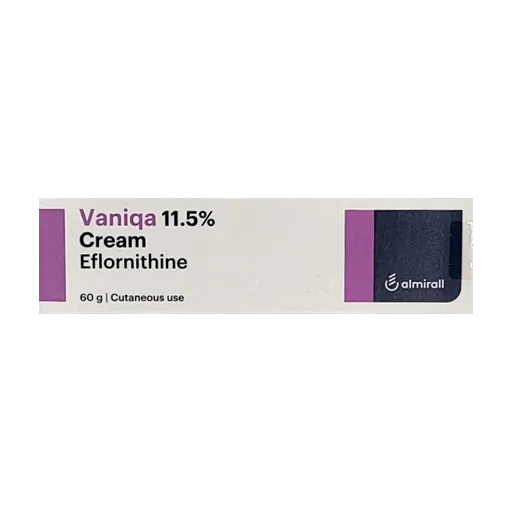hirsutism (hair removal) consultation
Please fill in the questionnaire below. Any information provided will be kept confidential and will only be seen by a prescriber. These questions are designed to give our prescriber enough information to make a decision on whether the treatment is suitable, please fill them in truthfully.
hirsutism (hair removal)
Hirsuitism is the growth of thick, dark hair on the face, neck, chest, abdoman, lower back, buttocks or thighs on woman. Hirusitism is caused by the level of hormones called androgens is increased or if you become more sensitive to them. The most common cause is polycystic ovary syndrome (PCOS), other causes include certain medicicines, steroids, hormonal condition or a tumour affecting your hormone levels, although sometimes there is no obvious cause. If you are overweight, losing weight can help control hormone levels. You can also shave, pluck or wax the hair. There is also a cream available on prescription which can help slow hair growth on your face.
-
POM
Hirsutism (Excess Hair Growth)
Hirsutism is a condition in which women develop thick, dark hair in areas where men typically grow hair — such as the face, chest, stomach, lower back, or thighs.
It’s caused by an excess of male hormones (androgens) or increased sensitivity to them. While not usually harmful, hirsutism can affect confidence and self-esteem.
Treatment focuses on managing underlying causes, reducing hair growth, and removing or lightening unwanted hair.
What causes hirsutism?
Hirsutism is usually linked to a hormonal imbalance. The most common causes include:
- Polycystic ovary syndrome (PCOS): The most common cause, often leads to irregular periods, acne, and weight gain
- Increased androgen levels: These male hormones stimulate hair follicles to grow darker, coarser hair
- Family history: Some women naturally have more body hair due to genetics
- Medications: Such as anabolic steroids or testosterone treatments
- Other hormonal disorders: Rare conditions like Cushing’s syndrome or adrenal tumours
How is hirsutism diagnosed?
Your GP may diagnose hirsutism based on the pattern of hair growth and medical history. They may also:
- Ask about your menstrual cycle and any other symptoms (e.g. acne, weight gain, voice changes)
- Perform a physical exam to assess the hair growth pattern
- Order blood tests to check hormone levels (e.g. testosterone)
- Arrange an ultrasound to check for PCOS or other conditions affecting the ovaries or adrenal glands
Hirsutism treatments
Treatment depends on the underlying cause, severity, and your preferences. It often includes a combination of medical treatments and hair removal methods.
Hair removal options
- Shaving: Quick and easy but needs to be repeated regularly
- Waxing: Removes hair from the root but can be painful and may irritate the skin
- Plucking or threading: Suitable for small areas like the upper lip or chin
- Depilatory creams: Chemically dissolve the hair but can cause irritation in sensitive skin
- Bleaching: Lightens dark hair so it’s less noticeable (not a form of removal)
- Laser hair removal: Uses light to destroy hair follicles — long-lasting results after multiple sessions
- Electrolysis: Destroys each hair follicle with a fine needle and electric current — permanent but time-consuming
Prescription treatments
- Oral contraceptive pills: Regulate hormone levels and reduce androgen production — helpful for PCOS-related hirsutism
- Anti-androgens (e.g. spironolactone): Block the effects of male hormones on hair follicles
- Topical eflornithine cream (e.g. Vaniqa): Slows down hair growth when applied to the skin — typically used for facial hair
Will treatment work?
Most women find that a combination of hair removal and medical treatment helps manage hirsutism effectively.
It can take 3 to 6 months for medical treatments like hormonal therapy or topical creams to show noticeable results.
For long-term hair reduction, laser hair removal or electrolysis may be more effective — particularly when combined with hormone regulation.
Hair removal and treatment side effects
Most methods are safe when used properly, but some may cause side effects:
- Shaving: Can cause ingrown hairs or irritation
- Waxing or plucking: May cause redness, swelling, or folliculitis (inflamed hair follicles)
- Hair removal creams: Can irritate or burn sensitive skin
- Laser hair removal: May cause temporary redness or pigmentation changes — always use a licensed clinic
- Eflornithine cream: Can cause skin dryness, redness, or acne
- Anti-androgens: May cause tiredness, dizziness, or changes in menstrual cycle
- Hormonal contraceptives: Can cause nausea, breast tenderness, or mood changes in some users
Speak to your doctor or pharmacist for personalised advice — especially if you have other hormonal symptoms, or if hair growth is sudden or severe.
